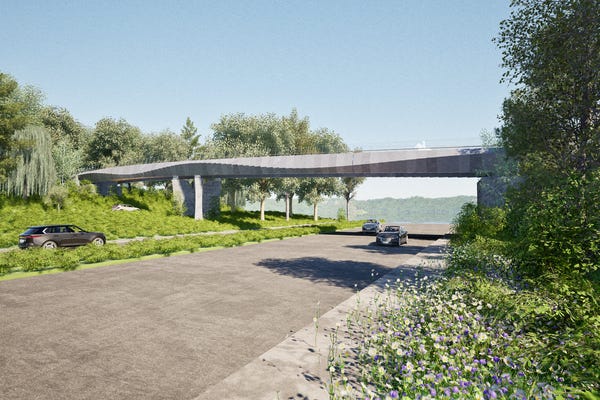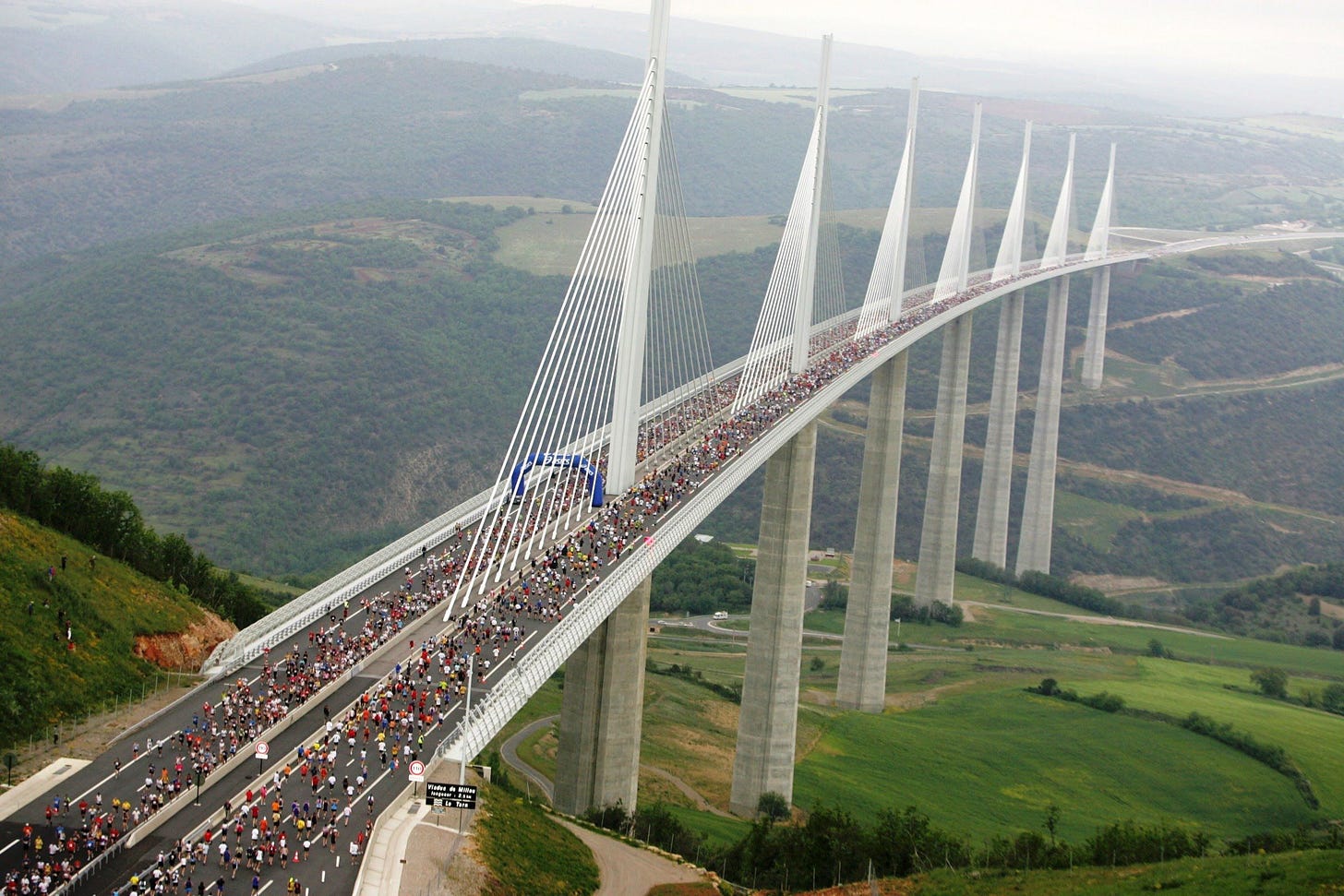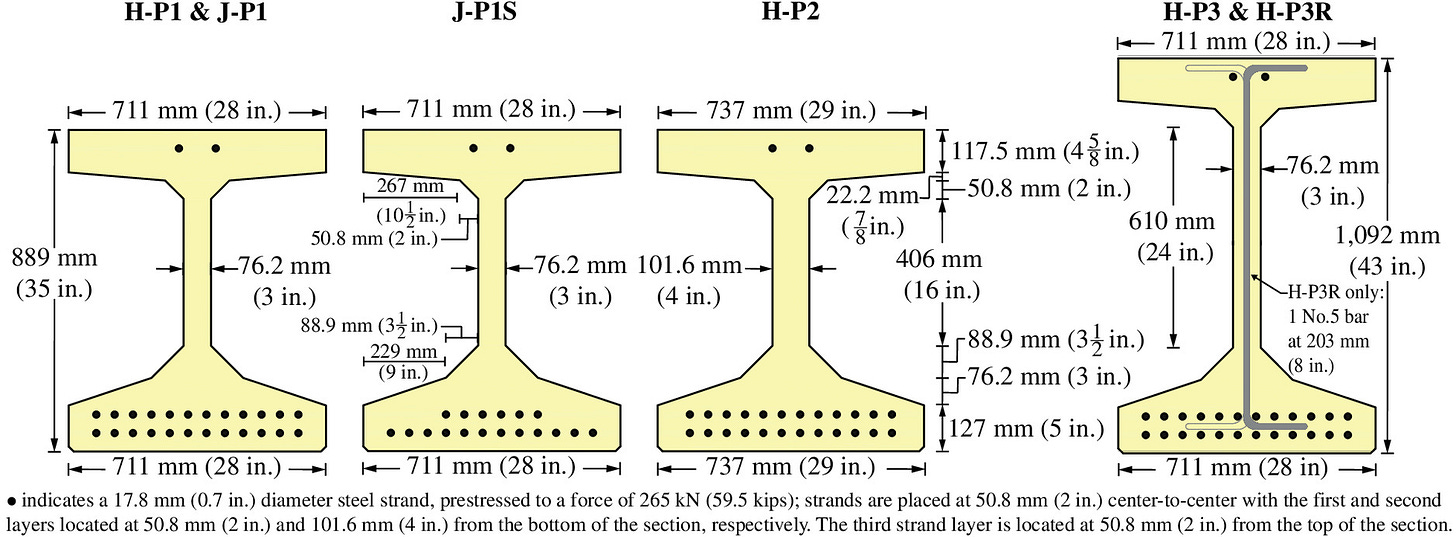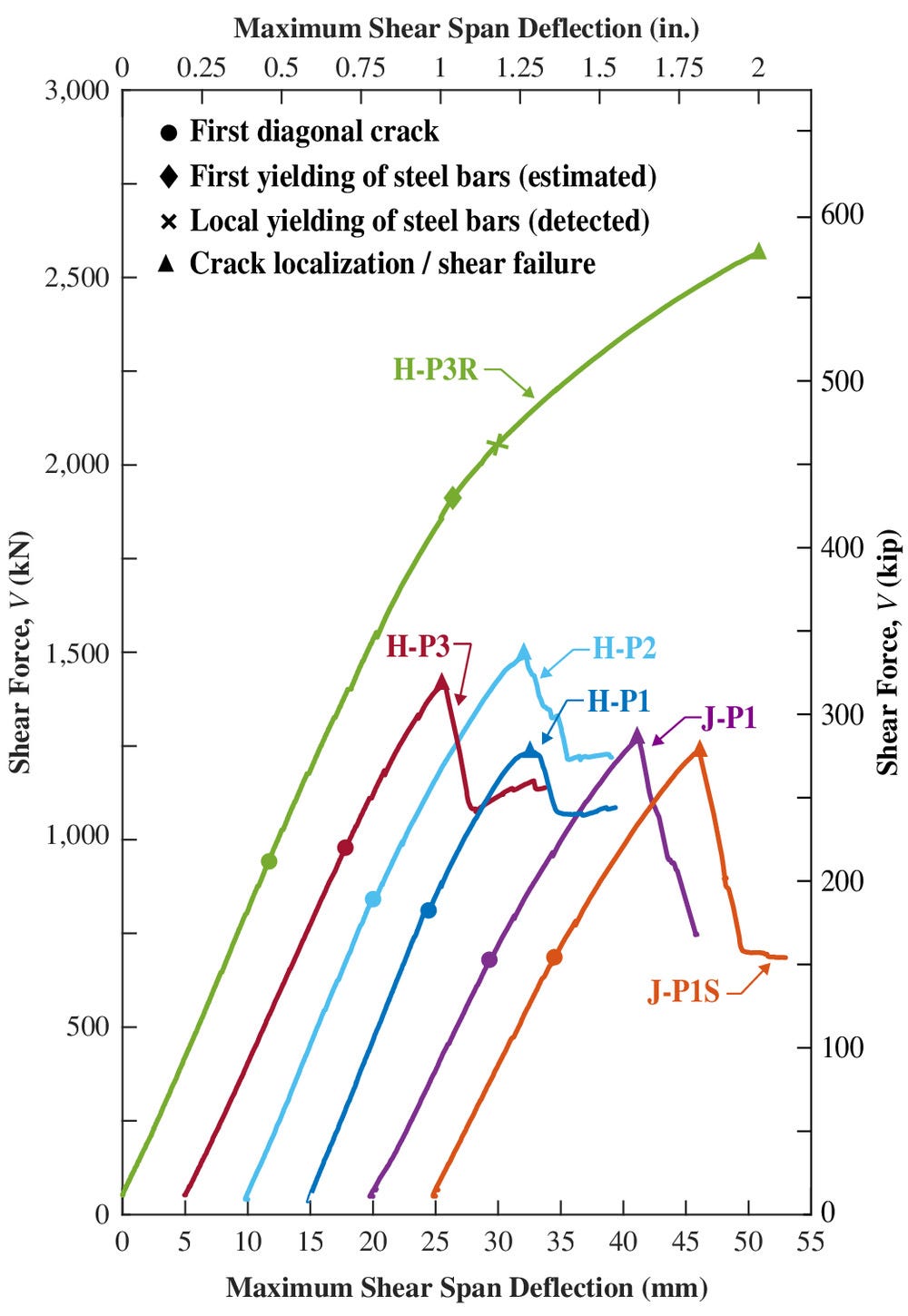5 interesting things for your week (#6)
Exploration of architectural economics in glass skyscrapers, the Millau Viaduct's design, UHPC shear behaviour research, innovative low-carbon footbridges, and essential structural engineering books.
Welcome to 2025 - I hope you all enjoyed some time off, spending time with family and focusing on things other than our weird world of structural engineering. (Variety is the spice of life, right?)
We’re back into it this week with a jam-packed round-up and some exciting things on the cards in the next few months. Stay tuned for more!
Why skyscrapers became glass boxes
In this article by Brian Potter, he argues that the “glass box” skyscraper became the norm not because of architectural trends, but because they were (are) cheaper to build and result in more leasable floor space.
It’s refreshing to hear examples of architects who understand the economics and function of the structures they’re designing. All too often we have the image in our head of the architect as the visionary artist, desperate to make their mark on the population with some creative stroke of genius (that requires slim, circular hollow sections, of course).
Lamb (one of the architects behind the Empire State Building) I think sums this up well:
whatever ‘style’ it may be is the result of a logical and simple answer to the problems set by the economic and technical demands of this unprecedented program.
Developers seem to have realised this all along. In the words of developer/architect James Loewenberg:
The person who looks to buy or rent a unit in a high-rise,” says Loewenberg, “only cares about three things: the location of the building, the layout of their unit, and the view from their unit. They don’t care as much about the physical appearance of the building and it is my contention that they never really look above the third floor…
That doesn’t mean the buildings have to be ugly though. Just look at one of Loewenberg’s most famous buildings, the Aqua Tower:
Ultimately there is somewhat of a dissonance here though. Architects have their fees paid by the people who occupy the building, but one of their main tasks (creating an attractive exterior) is for the people who look at the building - not the same people.
I’m glad Brian mentions design review boards and planning commissions. Most major cities have some version of this - an independent process new buildings must go through to ensure something is built in line with the city’s aesthetic.
The result though? Well, we can see it. More glass boxes. This may be more of a reflection on community feedback processes tending towards inoffensive, “bland” options, though.
Millau Viaduct
I’m sure we’ve all heard about the Millau Viaduct, the tallest bridge in the world, high up above the clouds. A gorgeous multispan cable-stayed bridge launched across massive concrete pylons.
This video, celebrating the 20th anniversary since its opening, is an interview with the architect behind the curtain, Lord Norman Foster.

There’s so many interesting things here - just give it a listen/watch.
Shear behaviour of UHPC
The authors of this paper in the ASCE Journal of Structural Engineering test six prestressed bulb-tee UHPC in shear. They were interested in examining the effect of UHPC material properties, girder height, web thickness, number of prestress strands and presence of discrete transverse steel reinforcement in the webs.
One conclusion from the paper:
Shear capacity was observed to be largely dependent on the tensile characteristics of UHPC. Changing the web thickness, the height, and the number of prestressing strands did not appear to significantly affect the shear capacity of the tested girders.
If you ignore the green line in the plot below (the only specimen with transverse reinforcement), the shear failure forces are all fairly similar despite varying web thicknesses, web heights and prestress arrangements.
In fact, if you did this same exercise with conventional concrete and unreinforced webs, the strength differences would be more severe.
The chart below shows a comparison with a simple unreinforced concrete web, using the same parameters as the paper, shown in orange (Vc_rel). These shear capacities are indexed against the value for test specimen H-P1. You can see that there is greater variation in the shear capacities of the beams using the methods we currently have for concrete compared with the experimental results for the UHPC beams.
Calculating shear capacities using current design methods predicts larger differences between values than experiments for UHPC beams.
The conclusion, as so often seems to be the case for UHPC, is that the material contains a heap of potential, however our current design methodologies for reinforced and prestressed concrete are inadequate to capture its behaviour.
More work needs to be done to develop equations and methods for structural engineers to employ this innovative material.
Low-carbon footbridges in the UK
National Highways in the UK has shortlisted five footbridge structures as part of a competition to design a structure that uses low-carbon materials and methods for the Lower Thames Crossing.
There are some very interesting and innovative entries here, mostly with timber decks and stainless steel piers. These are all concepts, but I’d be very curious to see the embodied carbon comparisons with a conventional footbridge of say steel or precast concrete.

The most interesting one is the final item, a prestressed stone bridge. I’m not quite sure how the team at Webb Yates Engineers are able to achieve that. It mentions there are draped internal tendons in the stone. I’m not sure how that would be achieved without using some kind of cast stone, at which point, is it really that much less carbon-intensive than concrete?
The parapet reflecting the internal draping is a nice touch, though.

The best books for structural engineers?
Brendan Hasty, a practising structural engineer in Melbourne, recommends his top 7 books every structural engineer should read. These books cover a wide range of topics from concrete to steel, to computational engineering.
All of these books are geared towards the Australian market, but the principles are useful to engineers everywhere, and the worked examples can easily be adjusted to your region-specific design code.
Data Book for Civil Engineers
I haven’t read this book, but from the preview in the video it looks very useful as a reference material on a wide range of structure types.
I do really dislike when people recommend books that have gone out of print though. It seems like you may be able to get a used copy for about $200 AUD. I once listened to a podcast which recommended James Dyson’s autobiography, which is out of print, and used copies now go for up to $800 AUD!
Steel Designer’s Handbook
I’ve got this book in my library and use it from time to time. It covers everything to do with steel design (as the title suggests). Connection design is addressed exceptionally well.
Concrete Structures by Warner, Rangan and Hall
Affectionately known as the “Red Book” among Australian engineers, it is a staple and the bible for reinforced concrete design here in Australia.
I’ve had this book for years and it is fabulous. It covers in great detail all of the fundamentals of reinforced concrete design (and even touches on some prestress).
Reinforced Concrete Basics
Known as the “Green Book” (there is also the “Yellow Book”, not mentioned here), I don’t know why you’d buy this one if you already have the Red Book. It’s much more of a beginners textbook, geared towards university students and graduate engineers. If that’s you and you’re looking to get started, you can buy this one, but I’d just go straight for the Red Book given the cost of textbooks.
Time-dependent Behaviour of Concrete Structures
This is a fantastic book, and something like it is absolutely essential if you’re looking in detail at the service performance of reinforced or prestressed concrete.
These are complex topics and necessary to truly master reinforced concrete design. As the authors, Gilbert and Ranzi note:
The prediction of the final deformation of a concrete structure, and the final extent and width of cracks, are perhaps the most uncertain and least well-understood aspect of structural engineering. The long-term behaviour of the structure depends primarily on the deformational characteristics of the concrete, including its creep and shrinkage characteristics, and these are highly variable, depending not only on the mix proportions and types of cement and aggregates, but also on the local environment and the load history. In most undergraduate civil and structural engineering courses, the effects of concrete creep and shrinkage on structural behaviour are treated superficially, with only the simplified code-oriented procedures for deflection and crack control being presented. The same is true of most books on the design of concrete structures. Failure to recognise and quantify the non-linear effects of cracking, creep and shrinkage is a common cause of serviceability failure.
So strap in for a very complex and technical (but useful) textbook.
Roark’s Formulas for Stress and Strain
I’ve used this book as a reference for years and find it quite valuable, but I use it far less than some of the others on this list. I find it most valuable for two tasks:
Sanity-checking finite-element model results
Performing quick hand calculations
Unfortunately the layout and presentation of the tables can often be confusing, so you really need to spend a couple of hours familiarising yourself with this book when you get it, so that when the need arises, you can quickly look up what you need to. If you have a physical copy, I’d suggest adding your own post-it notes in the margins, or bookmarks if you have a digital copy.
Computational Engineering
I haven’t read this book, but it’s on my list and I keep hearing fantastic things. It’s apparently written really well and is useful not only for computational engineering, but in general structural engineering.
It’s only sold through IStructE at the moment and the hefty price tag (plus shipping fees in GBP) are holding me back from purchasing, but I’ll get there one day.
In the meantime, you can listen to this podcast interviewing the author Peter Debney about the book.








